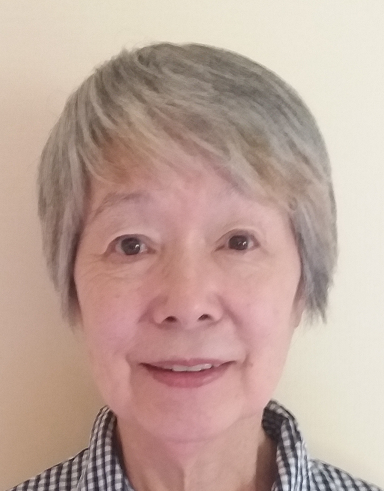


About The Editors
About The Editors
Paul Satoh, Ph.d.
A childhood friend of the author, Shigeaki Mori, Paul Satoh is now a Professor Emeritus following a distinguished career in Chemical Engineering and Materials Science at Michigan State University. Long before working on the English translation of Mr. Mori's book, Dr. Satoh assisted Mr. Mori with locating Thomas Cartwright and he attended a reunion of the 7th US Army Air Force's 494th Bombardment Group to relay Mori's findings to comrades of the American POWs killed in Hiroshima.
Yukako Ibuki
Yukako Ibuki
Editor-translator-interpreter
Yukako Ibuki
My name is Mrs. Yukako Ibuki, a teacher of English at high school level until I retired in 2004. I met exchange students from around the world, and talked with people in summer courses at some UK universities. Through their friendships, I learned some awful experiences from a few Englishmen, peoples of China, Korea and so on that they suffered under the Japanese during WWII. I became concerned about what the Japanese did in the Fifteen Year-War in Asia and Pacific.
In 2000, I met a former US Prisoner of War who was captured by the Japanese in the Philippines on April 9 1945: Dr. Lester Tenney, an emeritus professor of Arizona State University, who was the last Commander of the American Defenders of Bataan and Corregidor. He survived the Bataan Death March, and was sent to Japan to be one of the about 35,000 Allied POWs, who landed on Japan surviving the bombardments and the awful physical conditions of the ‘Hellship’ voyages. He was the Guest Speaker at the 4th Memorial Service for the Allied POWs, which have been hosted by three Japanese men annually on the first Saturday of August at the Commonwealth War Cemetery in Hodogaya, Yokohama-city. This event has now been taken over by younger generations. Around 1,700 from six Commonwealth countries are buried here, as part of the nearly 3,500 Allied POWs who died in Japan while they were engaged in the forced labor.
After the service, Lester talked about his POW experiences under the Japanese, including his forced labor at the Mitsui Coal Mine: Please refer to his and other POW Stories, history to the Invitation by the Ministry of Foreign Affairs of Japan in the bilingual site, US-Japan Dialogue on POWs, founded by Ms. Kinue Tokudome, which I could assisted as Tokyo Representative.
He told me later it was a strange experience for him that the Japanese audience listened to and accepted his talk without difficulty, which reaction was quite different in his own country. The truth was, with the knowledge of the Japanese military our generations had, his experiences were imaginable. They were not difficult for us to understand, even though they were shocking.
I grew up in a large Christian family of Japan. My Grandfather of my father’s side went to then Sapporo Agricultural College, current Hokkaido University, where Dr. William S. Clark founded the basis of education as Headteacher. His strong faith produced great Christian leaders into the Meiji society of Japan. Two elder cousins of mine were conscripted and were sent to the Pacific Theatre of WWII, toward the end of the war. One was immediately killed in action in Mindanao, another returned from the end of the Timor Islands in 1947, where they had no fighting without any ammunition. He must have seen the hell of human beings, starvation, tropical diseases and hatred by local people. He died two years later, as a broken man who said nothing, but I never forget his desperate sad eyes. His buddy from Goto Islands, a well-known area of Hidden Christians, wrote to the family, relaying some stories.
I respect and admire what Mr. and Mrs. Mori have done, and are still doing. War is Hell. Love and Friendship of human beings is beautiful and precious. As for one who knows both war and peace, I’d like to work in order to hand on peace for the younger generations.
With my gratitude to all who worked so hard to introduce the English version of Mr. Mori’s book into the world,
Yuka Ibuki.

Mark Shavers, Ph.D.
Editor
Mark Shavers, Ph.D.
Editor
Last to join Mr. Mori's team of translator-editors, I reviewed English drafts of the original Japanese book and contributed to the final English translation. Previous research and collaboration with Japanese scientists on radiation risks associated with ionizing radiation exposures provided me with somewhat relevant experience and an unsettling awareness of the nature and magnitude of acute and long-lasting health impacts. Nevertheless, my participation in this project was directly motivated by my good fortunate to have a close friendship with Tom and Carolyn Cartwright and through them to come to know of Shigeaki Mori's work.
This tribute website contains but a small portion of the information available from scholarly publications and contents of Japanese and U.S. historical archives. Gathering and sifting through the personal records of WW II servicemen has been an honor made possible by those men’s families and, in a few cases, by the service men themselves.
-Mark Shavers
Radiation Effects Research Foundation (RERF) Reception in Hiroshima in which Shigeaki Mori was recognized for his work and his experience as a hibakusha (atomic bomb-affected person). Japanese Space Agency Flight Surgeon, Yu Koike, provided an introduction in Japanese while Mr. Mori and Mark Shavers look on. October, 2014.

